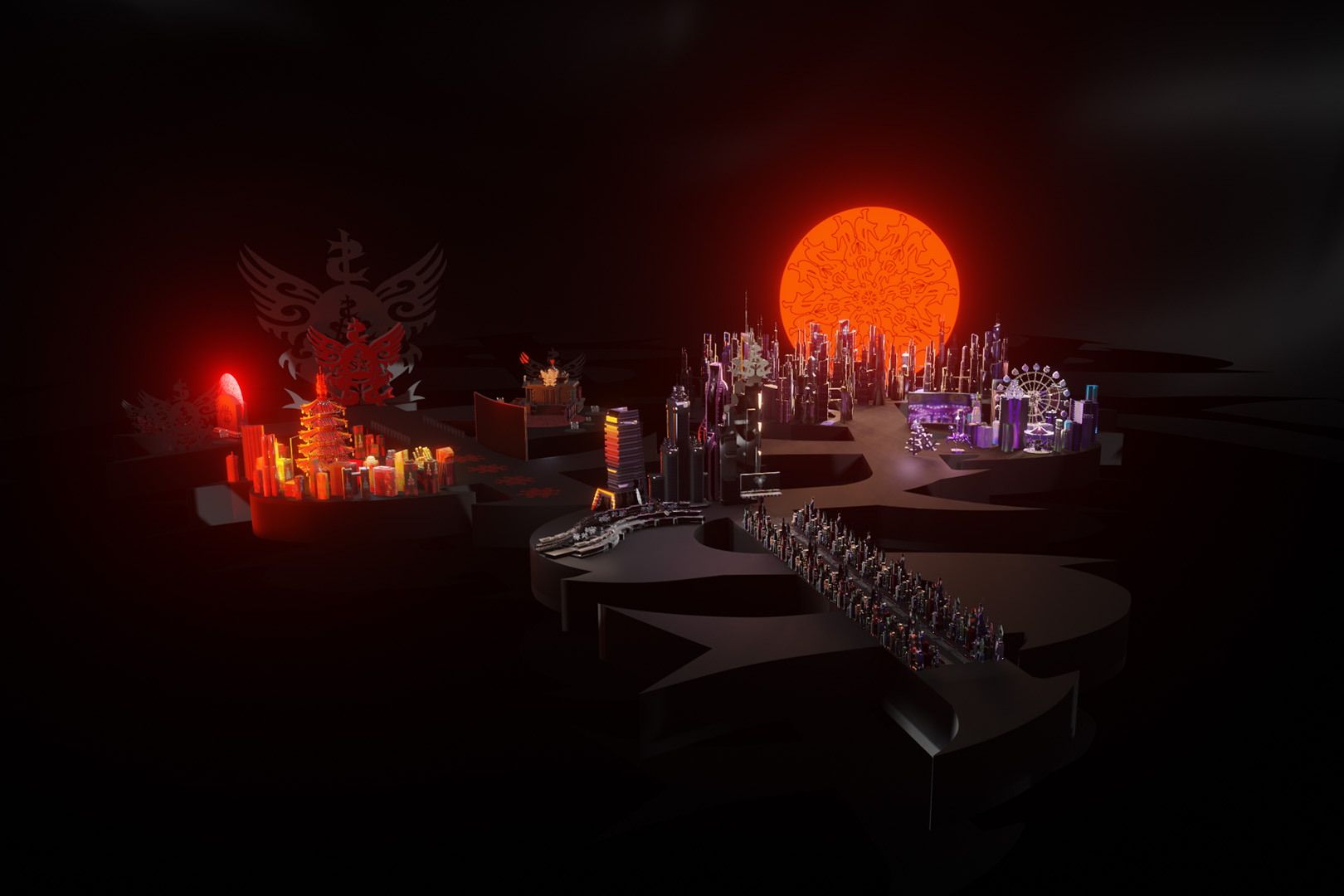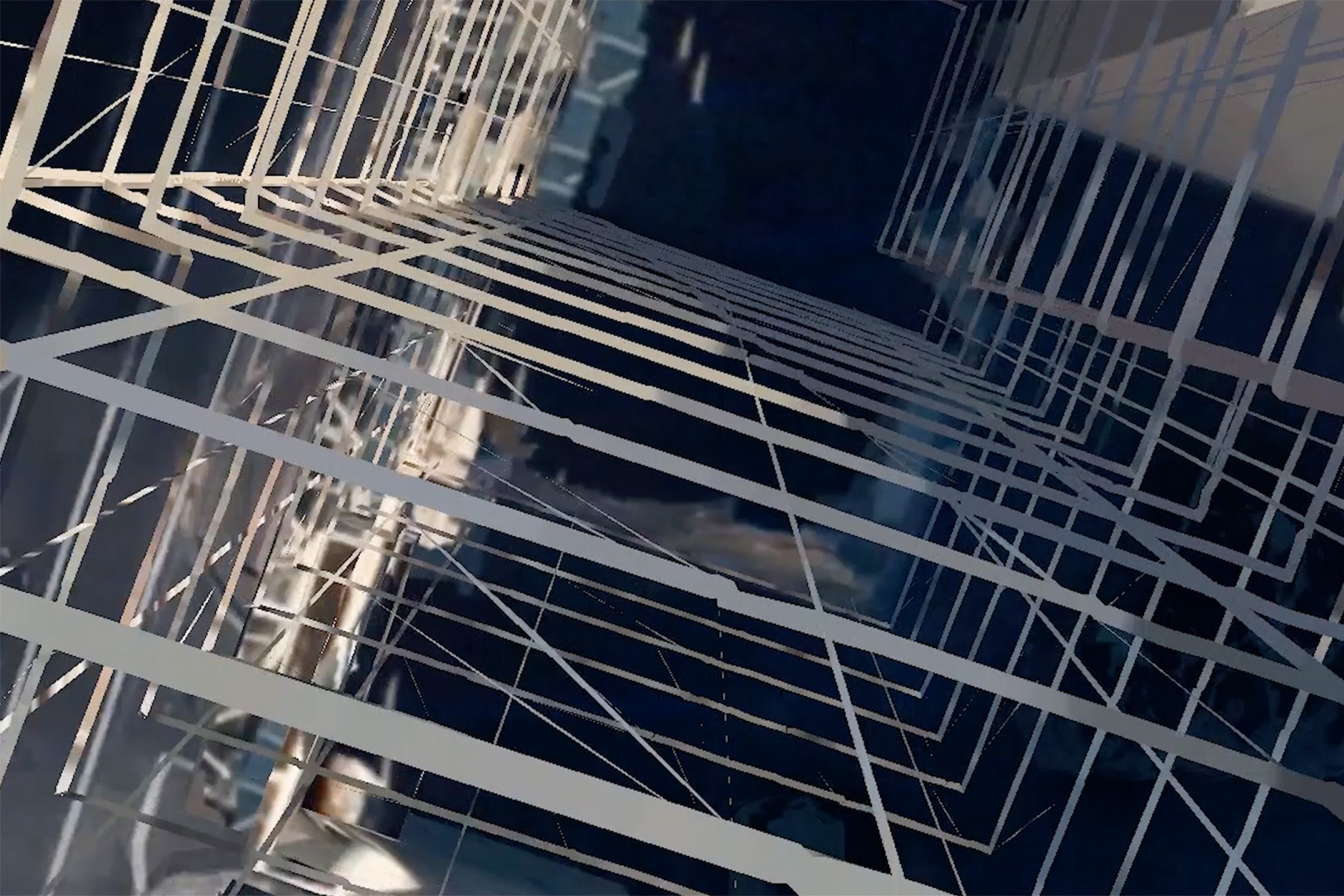The constructs that are presented to us, and those shaped by our experiences of living, and of habitation, inform how we represent the city. These imaginaries, in turn, help form the spaces we build, live in, play in, desire and fear.
Unreliable Landscapes is an interdisciplinary platform for the exhibition and discussion of work that focusses on the possibilities of envisioning the digital poetics of living. In this first iteration, strategies for reflection as well as future orientated proposals are placed together with the hope that they will present a collective double take on the urban worlds we live in and provide some stimulus for questioning where we are and how we might live.
The impetus for the development of the website (and accompanying publication) grew out of explorations into the glitches and discontinuities within the spaces of virtual navigation. Of equal interest is the intersection between the virtual worlds of Google’s Earth and Street View and how these digital representations could work alongside a more documentary approach to my observations of the contemporary urban condition. This two-fold influence came together in the series Unreliable Landscapes, which also provides the umbrella title for this website. The original video is featured as part of the selection of work represented here.
This origianal work in the series explored sites flagged for infrastructural change as part of the ongoing development and construction of the City Rail Link in Auckland, New Zealand. The Downtown Shopping Centre which opened on 30 April 1975 was the only mall in Auckland’s Central city, and boasted 80 stores over three floors. It closed forty-one years later on 28 May 2016, and demolition was complete by November 2016. However, the mall continues to be a digital presence located on screen and from the viewpoint of a digital ‘drone’ forced inside the surrounding high-rise structures, only the approximate presence of buildings, spaces and surrounding urban life is revealed.
Georgia Carr and Warisara Thomson both also use Google’s Street View to piece together accounts of their own lives in the cities that they have lived in. Carr, in her work selfish mapping and revolting houses i’ve moved into strips away most of what is digitally mapped to leave a minimal framework of images that sit between cognitive maps of her neighbourhood and visual, shorthand, notes for further explanation. These ‘selfish maps’ are made all the more complex as they collapse all sense of distance and perspective and are only partially rendered from the space of the screen.
Warisara Thomson takes us on a tour of the town that she grew up in. In I think I’m homesick Thomson restlessly probes back into her own recent past in Ban Chang, Rayong in Thailand. She does this with a wry sense of humour and uses her memories of the place to revisit her favourite food stalls, friends’ houses, her childhood home and where she had her first motorbike accident. Thomson also encounters the melancholy of looking at familiar places that are so distant, made even more prophetic in that her digital visits happened during the closing down of the world during the Covid pandemic.
Chirag Jindal uses terrestrial LiDAR (laser imaging, detection and ranging) to document the frontages of two familiar suburban shopping streets in Onehunga and Balmoral. The process of using a laser means that the images are created by measuring the distance and reflectiveness of surfaces. This has the impact of creating an uncanny absence of depth in the images as multiple elevational details are flattened into a single image plane. There is also a strange sense of time within the images. People are present in cafes and as varyingly disappearing figures walking along the street but they exist in a timeless world. Shadows are present but they are not from the sun or from street lights. These images digitally compress both time and space.
Xi Li’s (李曦) Spirit Ether tests the boundaries between simulation and reality while examining the contradictions of the logic of late capitalist desire and popular urban culture. The metropolitan worlds within Spirit Ether present an architecture of distortion through the interplay of non-linear image narration and scale, where the relationship between reality and imitation is a complicated and irreconcilable issue.
The Unreliable Landscapes project is interested in what we can make of this vast terrain of information and visualization, urban storytelling, recombinatory practices and future oriented utopias. As Victor Burgin has noted, “There is more to our wanderings in the city than urban planners take account of.”
David Cowlard, 2022





Artist Bios:
Georgia Carr is a picture maker, digital artist and educator. Her current work investigates the cyber-self through digital and printed platforms, often centering the internet and its rendering and mirroring of physical space. She has self-published a number of photobooks that explore analogue and digital manipulation. Georgia has recently completed a Masters of Fine Art at Whitecliffe in Auckland.
David Cowlard is a filmmaker, photographer, sound artist and educator. His interdisciplinary practice explores new forms of architectural representation, the city and everyday life and he has a particular interest in how moving image, field recording and locative media can inform a wider critical engagement with the built environment. David is Programme Leader for Photo Media at Whitecliffe, Auckland.
Chirag Jindal is an artist and surveyor. He works at the intersection of documentary journalism and contemporary cartography. After graduating with his Master of Architecture in 2016, Jindal began practicing with terrestrial LiDAR - an emerging form of lens-based imaging applied in archaeological surveying and criminal forensics. He employs this technique to document our relationship to marginalised landscapes, seeking to “unravel the hidden effects, and unseen layers, of human presence.” In his 2018 debut series Into The Underworld, Jindal created tracings of ancient lava caves underneath the city of Auckland. Unique to the volcanic region and held sacred by local iwi, the sites now lie dilapidated by a century of rapid urban sprawl. Through exercises in exploring, mapping, and revealing, Jindal takes an empirical approach to bring a mythified world into the domain of public visibility, offering it as something to be recognised, preserved and managed as a shared heritage.
Warisara Thomson is a multidisciplinary artist working with photography, installation, performance, and moving image. Warisara is of Thai and Pakeha descent currently living in Tamaki Makaurau, Auckland. She completed her Bachelor of Fine Arts degree (specialising in Photo Media) in 2021and her work I think I’m Homesick was awarded the Board's Choice Award at the Eden Arts Art School Awards in early 2022. Warisara’s current work explores distance and relationships with family and friends, identity, and Thai political discourse.
Xi Li (李曦) is an interdisciplinary artist from Harbin, China, based in Tāmaki Makaurau, Auckland, New Zealand. She received a Bachelor of Fine Arts (Photo Media) from Whitecliffe College of Arts and Design in 2019. In 2021 she received a Master of Fine Arts (with first class honours) at Elam School of Fine Arts at the University of Auckland and was the recipient of the 2021 Iris Fisher Award. Xi Li's creative practice includes film, digital image, photography, installation, performance, 3D animation, VR, game design, and music. She explores various experimental concepts through Eastern and Western philosophical frameworks, covering identity, ideology, subjectivity, subculture, popular culture, globalization, and more.
This research project is supported by Whitecliffe’s contestable research funding
